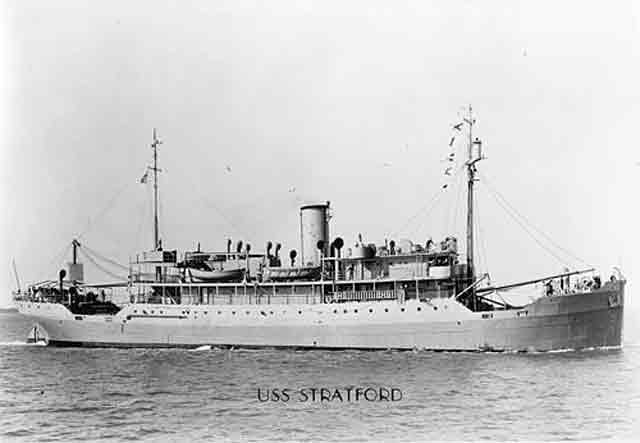Wednesday 22 October 1941
 |
| "Staff Sergeant-Major Twist of the ATS embraces and kisses her husband, Lance-Bombardier Twist during a special photo-shoot at Army Headquarters in Northern Ireland, 22 October 1941." © IWM (H 14922). |
Eastern Front: Operation Typhoon, the German attack on Moscow, has been gaining ground in fits and starts against furious Soviet opposition. On
22 October 1941, the Wehrmacht experiences another day of success in some areas but problems in others. It is a very emotional day of highs and lows on both sides, with some good omens and bad ones. Overall, the German Army (Heer) improves its position, but the weather increasingly is becoming almost as big an obstacle as the Red Army.
 |
| "Auxiliary Territorial Service (ATS) women at a 3.7-inch anti-aircraft gun site at Wormwood Scrubs in London, 22 October 1941." © IWM (H 14878). |
There are several German successes. One takes place at the village of Naro-Fominsk, one of the linchpins of Moscow's second line of defense only 43 miles from the city itself. The 2nd Battalion (Major Lübke) of the 479th Infantry Regiment of the 258th Infantry Division (Major General W. Hellmich) manages to create a wedge in the Soviet line at Naro-Fominsk on the main road into Moscow from the southwest. Just south of there, the 3rd Infantry Division (motorized, General der Artillerie Curt Jahn) also creates a 7-mile wedge in the Soviet line with a successful crossing of the Nara River by the 29th Motorized Infantry Regiment. They are supported by the 8th Motorized Infantry Regiment, which provides essential flank protection. Even further south, about 20 miles away, the 98th Infantry Division (Lieutenant General Erich Schröck) also crosses the Nara River. Schröck's men meet up with the 19th Panzer Division (Lieutenant General O. von Knoblesdorff) at Gorki, where they capture a road bridge.
 |
| "HMS KENT [cruiser] alongside the destroyer HMS PUNJABI during fuelling operations at sea," 22 October 1941. © IWM (A 7608). |
So, the day goes well for the Germans on the southwest axis of the advance. However, the Red Army if far from defeated in the battle for Moscow and is fighting hard everywhere. At Mtensk, the German 4th Panzer Division of the XXIV Panzer Corps (General Geyr von Schweppenburg) of General Guderian's 2nd Panzer Army remains stuck fast. This is the most important axis of advance, along the main road coming from the south, because it offers the only prospect of actually surrounding the capital. The battle is wearing out the panzers, and Guderian's entire command is down to less than 100 tanks - when a single division at the beginning of Operation Barbarossa had over 300. Guderian begins the process of combining all of the panzers under his command into a single brigade in the 4th Panzer Division, a reflection of how significant his losses have been.
 |
| Sea Power magazine, Volume 1, Issue 1, October 1941. It features the article, "Japan's Navy - Bluff or Blitz?" |
There are some troubling signs on the Soviet side, too. During its violent battle on the Nara, the 8th Motorized Infantry Regiment takes 1700 prisoners, including 52 officers. These turn out to mostly local Muscovite workers and workers militias drafted at the last minute along with some odds and ends from Ukraine. They seem happy to be captured, swearing at their political commissars and ripping their insignia off. Some shout "Voyna Kaputt" - "The War is Over!" - as they surrender. This is a welcome sign to the Germans, who throughout Operation Barbarossa have been looking for signs of disintegration in the Red Army.
 |
| Lord and Lady Newtown Butler with their daughter, 22 October 1941 (© National Portrait Gallery, London). |
However, the ultimate decision on the day comes from the weather. The Rasputitsa (change of seasons) now is in full swing, and the Wehrmacht proves ill-suited to cope with endless fields of deep mud and swollen creeks. German trucks can get no traction, horses get trapped, and even the panzers have difficulty. German tanks are ideally suited to paved roads and hard fields, but their treads are not as wide as Soviet tank treads and thus they gain less traction. While the panzers are not stopped, they are slowed, and to a much greater degree than are the Soviet T-34 and KV tanks. Rather than fight the mud while also trying to fight the Red Army, Field Marshal Fedor von Bock pauses the advance until the temperature falls further and the mud freezes enough to provide some traction.
 |
| Sylvia at the refrigerator, 22 October 1941 / Alan Evans (CAROLINE SIMPSON LIBRARY & RESEARCH COLLECTION). |
At Odessa far to the south, the Soviets gain some revenge for their loss of the city through a deadly means. As Soviet troops have done before at Kyiv and smaller towns, the retreating Soviet Coastal Army left behind some bombs which they can detonate by radio signal or are simply time-delayed. Today, several days after the Romanians entered the city and their suspicions have gone away, the Soviets detonate one at the Romanian Command Headquarters.
 |
| USS Stratford (AP-41), 22 October 1941. The Stratford was a converted small freighter and West Indies cruise ship (named Catherine) which first served the US Navy at Iceland, then in the Pacific as a troop transport and supply vessel. |
The detonation at Odessa kills 67 men, including Romanian Major General Ion Glogojanu, 16 of his staff including 4 Kriegsmarine officers, 35 other soldiers, and nine civilians (some being used as interpreters). Romanian leader Ion Antonescu orders reprisals, announcing that 100 communist and Jewish hostages would be executed for every enlisted man killed by the explosion and 300 for each officer.
 |
| Odesa port facilities following the Soviet withdrawal. |
The Romanians also do something that hints that even a victory over the Soviet Union will not satisfy their territorial desires. Antonescu denounces the 30 August 1940 Second Vienna Award, which gave Hungary territory in northern Transylvania claimed by Romania. Hitler's plan was for Romania to be satisfied by being given the Transnistria province in the Soviet Union that it really wanted. Today's action suggests that Romania's military success at Odessa has only whetted its appetite for territory. From this point forward, the Germans are as much concerned with keeping their Romanian and Hungarian allies' troops separated as much as they are using them to fight the Red Army.
 |
| Hilde Krahl on the cover of Film Woche magazine, 22 October 1941. Krahl survived the war and continued her film career until the 1990s (after a four-year interruption after the conflict). Krahl passed away on 28 June 1999. |
October 1941
October 1, 1941: Germans and Finns Advance in USSR
October 2, 1941: Operation Typhoon Broadens
October 3, 1941: Air Battles Near Moscow
October 4, 1941: Stalin Contemplates Defeat
October 5, 1941: Hoth Goes South
October 6, 1941: First Snowfall After Dark
October 7, 1941: Stalin Gets Religion
October 8, 1941: FDR Promises Stalin Aid
October 9, 1941: FDR Orders Atomic Bomb Research
October 10, 1941: Reichenau's Severity Order
October 11, 1941: Tank Panic in Moscow
October 12, 1941: Spanish Blue Division at the Front
October 13, 1941: Attack on Moscow
October 14, 1941: Germans Take Kalinin
October 15, 1941: Soviets Evacuate Odessa
October 16, 1941: Romanians Occupy Odessa
October 17, 1941: U-568 Torpedoes USS Kearny
October 18, 1941: Tojo Takes Tokyo
October 19, 1941: Germans Take Mozhaysk
October 20, 1941: Germans Attack Toward Tikhvin
October 21, 1941: Rasputitsa Hits Russia
October 22, 1941: Germans Into Moscow's Second Defensive Line
October 23, 1941: The Odessa Massacre
October 24, 1941: Guderian's Desperate Drive North
October 25, 1941: FDR Warns Hitler About Massacres
October 26, 1941: Guderian Drives Toward Tula
October 27, 1941: Manstein Busts Loose
October 28, 1941: Soviet Executions
October 29, 1941: Guderian Reaches Tula
October 30, 1941: Guderian Stopped at Tula
October 31, 1941: USS Reuben James Sunk
2020









No comments:
Post a Comment